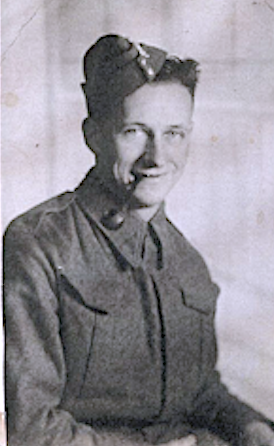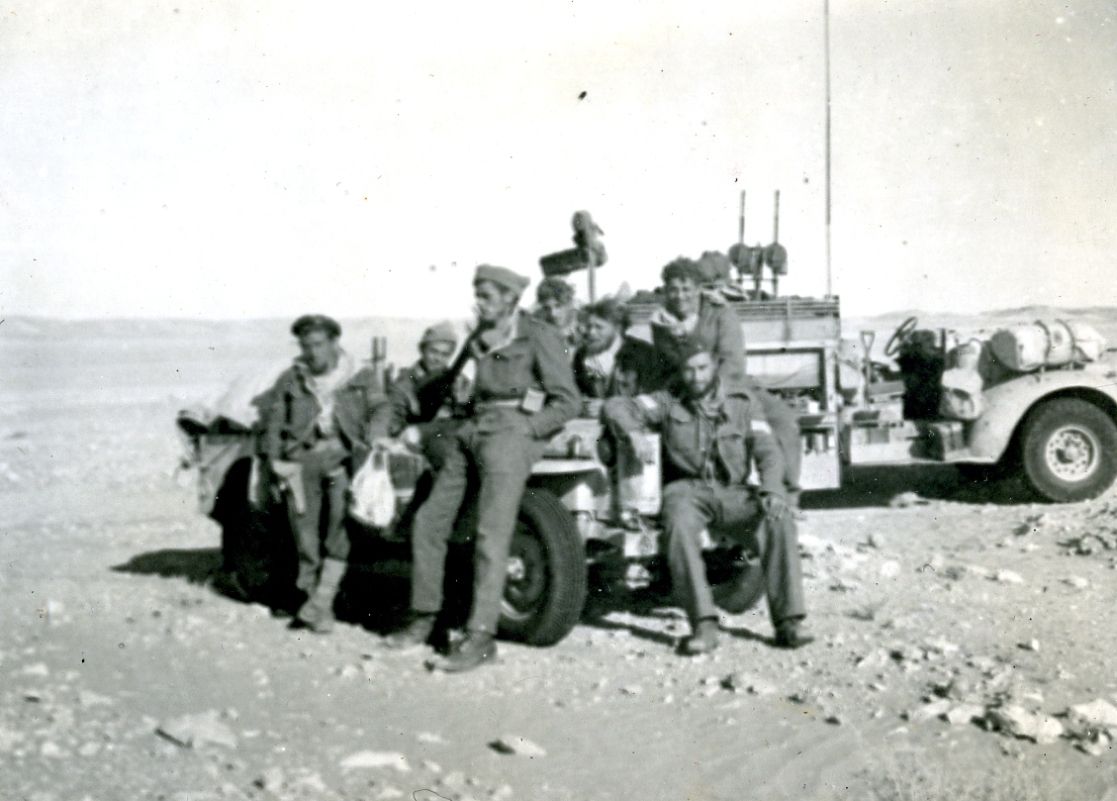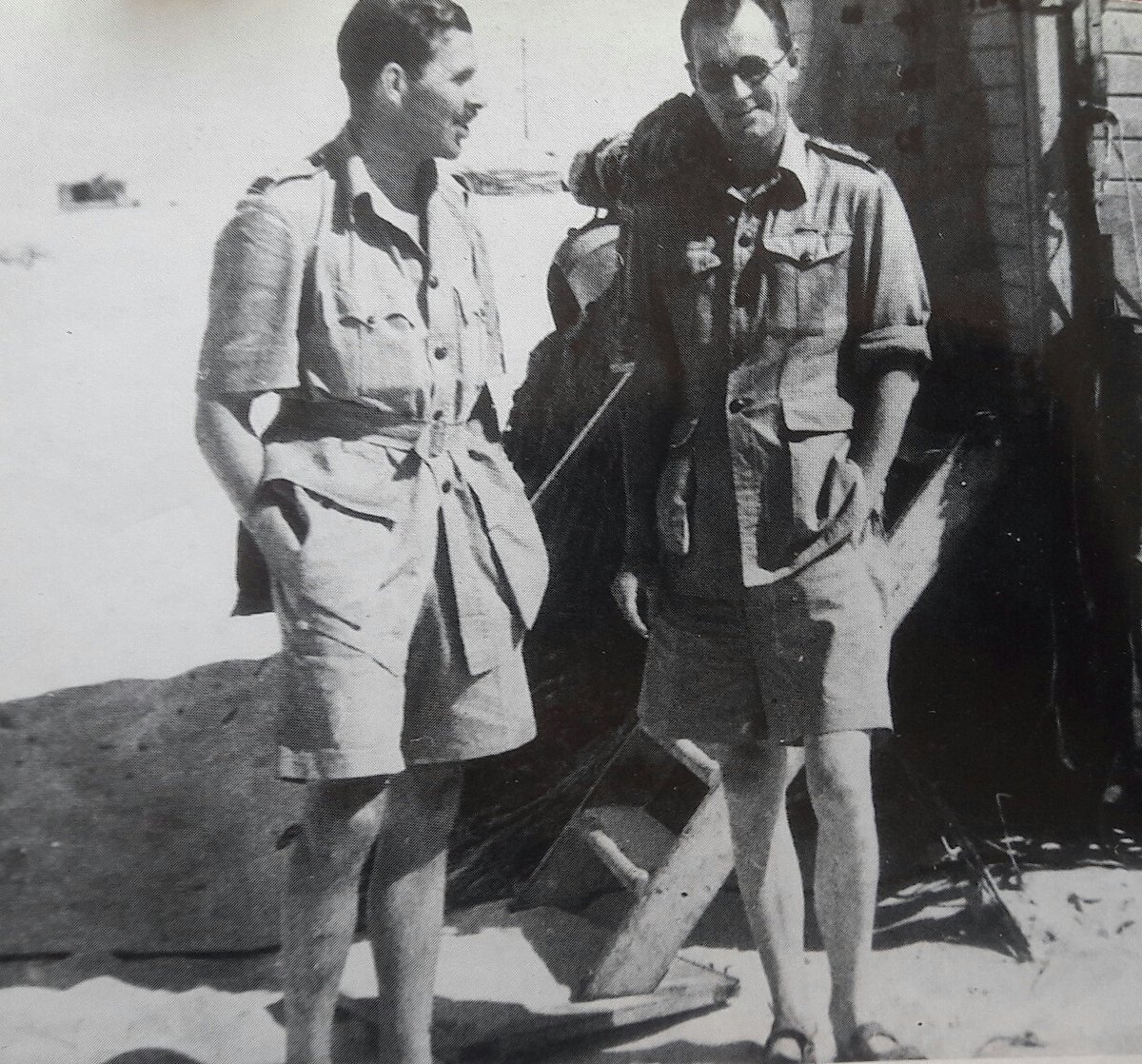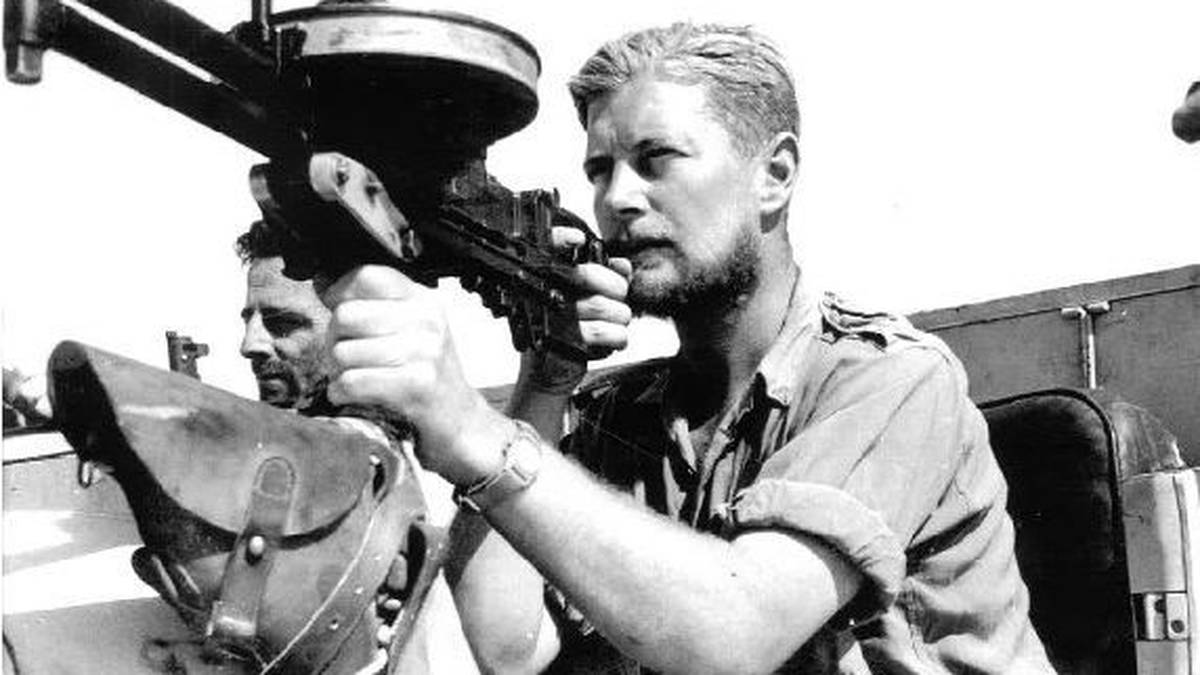
1/
Of all the stories I heard from WW2 SF veterans, this is the most incredible.
It came from Jimmy Hughes (pic), & how he escaped the clutches of the Gestapo to make it back to Britain with the first news of Hitler’s infamous Commando order.
The story starts on Jan 20 1944
Of all the stories I heard from WW2 SF veterans, this is the most incredible.
It came from Jimmy Hughes (pic), & how he escaped the clutches of the Gestapo to make it back to Britain with the first news of Hitler’s infamous Commando order.
The story starts on Jan 20 1944

2/
I never met Jimmy face to face; we corresponded by letter through 2002 & he sent me a copy of his memoir, Who Cares Who Wins.
Post-war Jimmy had a distinguished career in his beloved Liverpool, as you can read on Wikipedia.
But his life was defined by what happened in 1944
I never met Jimmy face to face; we corresponded by letter through 2002 & he sent me a copy of his memoir, Who Cares Who Wins.
Post-war Jimmy had a distinguished career in his beloved Liverpool, as you can read on Wikipedia.
But his life was defined by what happened in 1944
3/
Jimmy was an artilleryman, stationed on Malta at the height of the siege. In summer 1943 he volunteered for 2SAS. Here he is with 3 of his men, at Noci, Italy, Dec 1943.
Jimmy, front left, alongside, sgt Ralph Hay, murdered by the Germans in October 1944 during Op Loyton.
Jimmy was an artilleryman, stationed on Malta at the height of the siege. In summer 1943 he volunteered for 2SAS. Here he is with 3 of his men, at Noci, Italy, Dec 1943.
Jimmy, front left, alongside, sgt Ralph Hay, murdered by the Germans in October 1944 during Op Loyton.
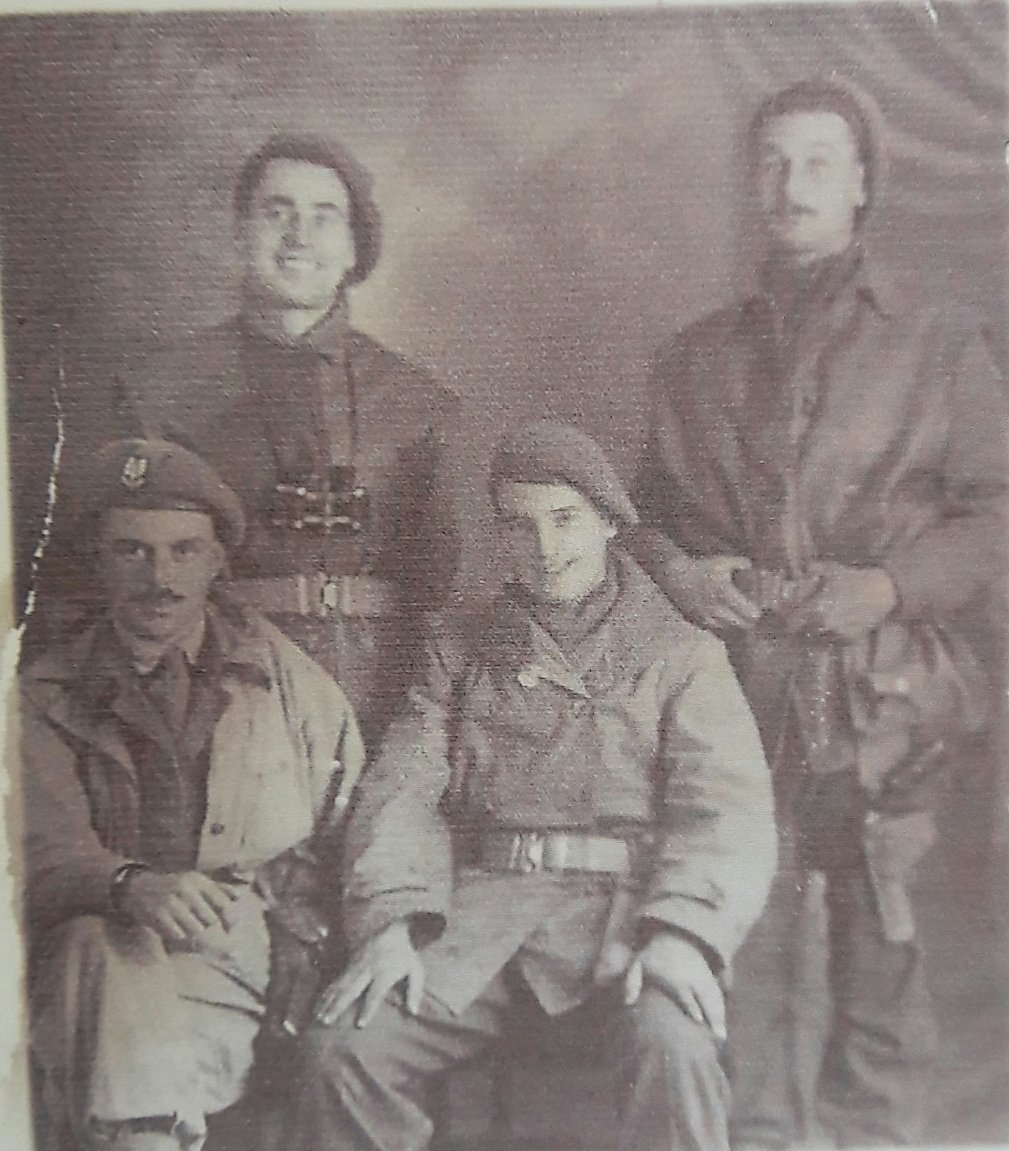
4/
Hughes was one of 6 men selected for Op Pomegranate, led by Major Anthony Widdrington, pic, “a big man in every sense of the word”. They took off on Jan 12 in a USAAF D.C 3 plane.
Bill Stirling selected Hughes because “he's getting a damn sight too fond of an Italian girl”.
Hughes was one of 6 men selected for Op Pomegranate, led by Major Anthony Widdrington, pic, “a big man in every sense of the word”. They took off on Jan 12 in a USAAF D.C 3 plane.
Bill Stirling selected Hughes because “he's getting a damn sight too fond of an Italian girl”.
5/
This was Elizabetta (pic, right, post-war), who Hughes had fallen in love after meeting her at a 2SAS Christmas dance.
The purpose of Operation Pomegranate was to destroy enemy aircraft on San Egidio, situated on a plain between Assisi & Perugia in central Italy.
This was Elizabetta (pic, right, post-war), who Hughes had fallen in love after meeting her at a 2SAS Christmas dance.
The purpose of Operation Pomegranate was to destroy enemy aircraft on San Egidio, situated on a plain between Assisi & Perugia in central Italy.
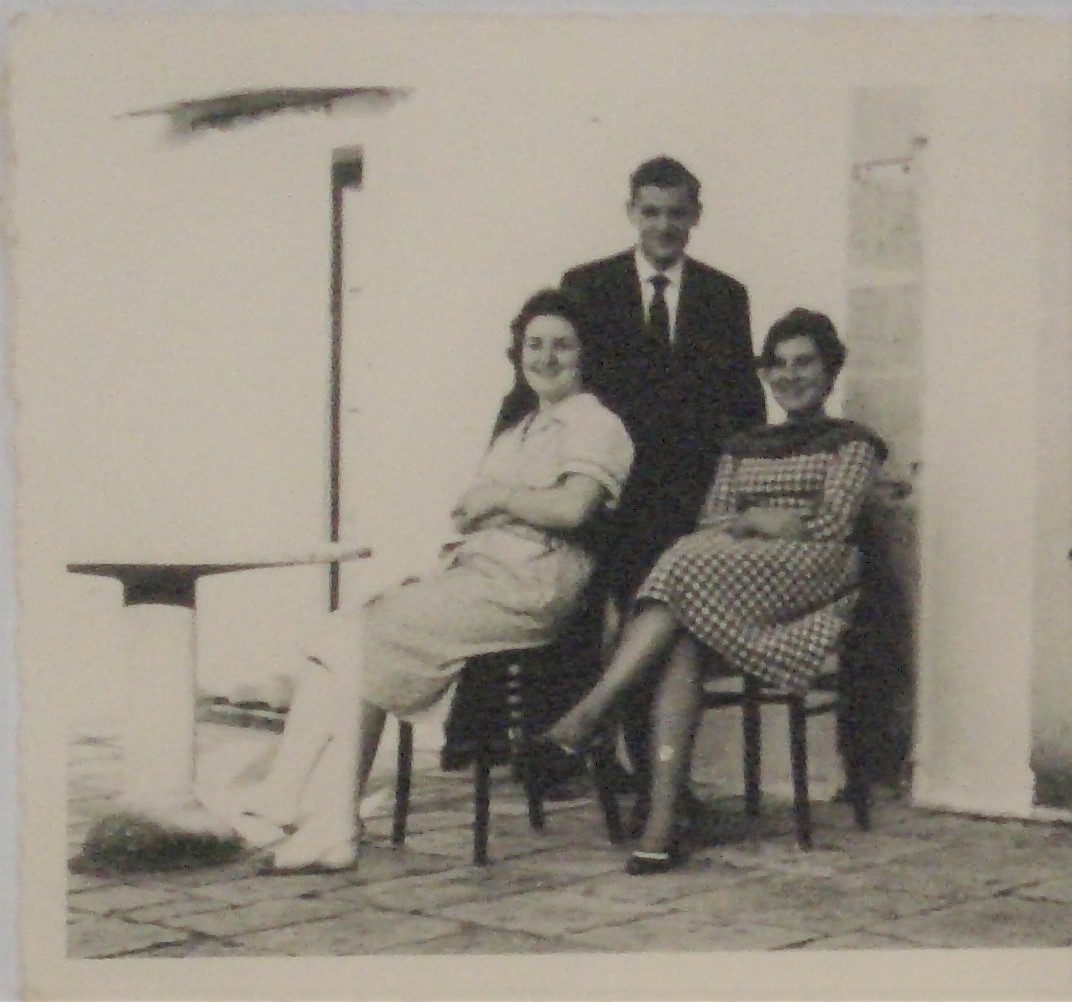
6/
Hughes on how he prepared for his first SAS op: "Imagination is a strange characteristic of the human mind. In order to survive each man must learn how first to test it in order, in broad terms, to measure the odds, and then to switch it off lest it become an impediment."
Hughes on how he prepared for his first SAS op: "Imagination is a strange characteristic of the human mind. In order to survive each man must learn how first to test it in order, in broad terms, to measure the odds, and then to switch it off lest it become an impediment."
7/
The six men parachuted without incident east of Lake Trasimeno, but the USAAF D.C 3 crashed into a mountainside in poor visibility on its return.
All went well initially for the SAS but they became separated crossing the river Tiber.
Hughes & Widdrington pressed on alone.
The six men parachuted without incident east of Lake Trasimeno, but the USAAF D.C 3 crashed into a mountainside in poor visibility on its return.
All went well initially for the SAS but they became separated crossing the river Tiber.
Hughes & Widdrington pressed on alone.
8/
The 4 men eventually returned to 2SAS HQ. Unsatisfied with the “inconsistent accounts of their movements after their separation”, Bill Stirling had themRTUd.
Like Paddy Mayne (and unlike David Stirling), Bill was ruthless in culling the ineffective
Pic: Hughes pre-op prep
The 4 men eventually returned to 2SAS HQ. Unsatisfied with the “inconsistent accounts of their movements after their separation”, Bill Stirling had themRTUd.
Like Paddy Mayne (and unlike David Stirling), Bill was ruthless in culling the ineffective
Pic: Hughes pre-op prep
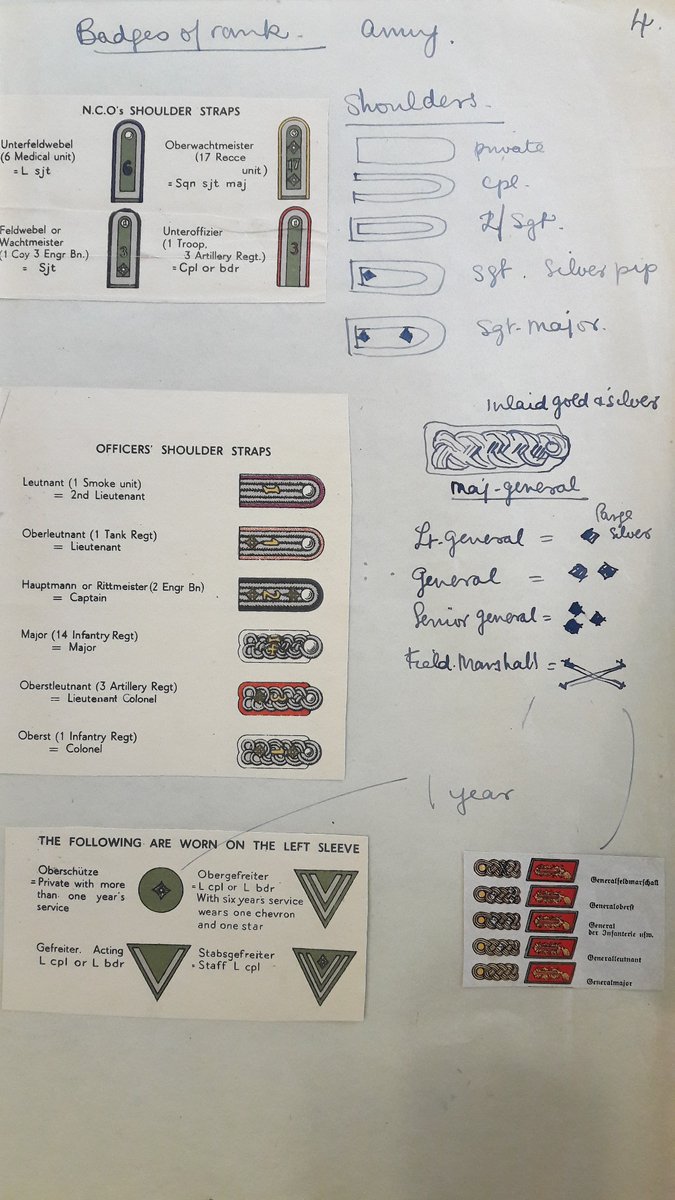
9/
Hughes and Widdrington reached San Egidio (Pic: aerial recce photo) & spent 24 hours reconnoitring. On the evening of Jan 19 they penetrated the airfield & began planting bombs on Junkers 88 & 52.
At 0020 hrs, Jan 20, there was a terrific explosion. Hughes lost consciousness.
Hughes and Widdrington reached San Egidio (Pic: aerial recce photo) & spent 24 hours reconnoitring. On the evening of Jan 19 they penetrated the airfield & began planting bombs on Junkers 88 & 52.
At 0020 hrs, Jan 20, there was a terrific explosion. Hughes lost consciousness.

10/
A bomb had exploded in the hands of Widdrington. It was later surmised that because he’d carried the bombs in his hand or close to his body, he had warmed them up, reducing the timing of the lead delay, so the bombs exploded after one hour & 20 minutes instead of 2 hrs.
A bomb had exploded in the hands of Widdrington. It was later surmised that because he’d carried the bombs in his hand or close to his body, he had warmed them up, reducing the timing of the lead delay, so the bombs exploded after one hour & 20 minutes instead of 2 hrs.
11/
Hughes woke in a Perugia hospital (a hospital cleaner later told him that 7 aircraft had been destroyed on the airfield).
As Hughes lay in bed with a serious eye wound, he was questioned by a German intelligence officer. Lt Hughes declined to cooperate.
Hughes woke in a Perugia hospital (a hospital cleaner later told him that 7 aircraft had been destroyed on the airfield).
As Hughes lay in bed with a serious eye wound, he was questioned by a German intelligence officer. Lt Hughes declined to cooperate.
12/
The Intel officer informed Hughes that the Gestapo ‘wished to have me handed over in order that I might be shot’. This was in accordance with Hitler’s Commando Order of October 1942 ‘which stated that all saboteurs, whether wearing uniform or civilian clothes, would be shot’.
The Intel officer informed Hughes that the Gestapo ‘wished to have me handed over in order that I might be shot’. This was in accordance with Hitler’s Commando Order of October 1942 ‘which stated that all saboteurs, whether wearing uniform or civilian clothes, would be shot’.
13/
In the room next to Hughes was Major Gerhard Schacht (pic right), a distinguished airborne officer, & veteran of the capture in May 1940 of the Belgian fort of Eben-Emael.
Schacht was outraged on learning of Hitler’s Order. He & Hughes struck up a special forces friendship.
In the room next to Hughes was Major Gerhard Schacht (pic right), a distinguished airborne officer, & veteran of the capture in May 1940 of the Belgian fort of Eben-Emael.
Schacht was outraged on learning of Hitler’s Order. He & Hughes struck up a special forces friendship.
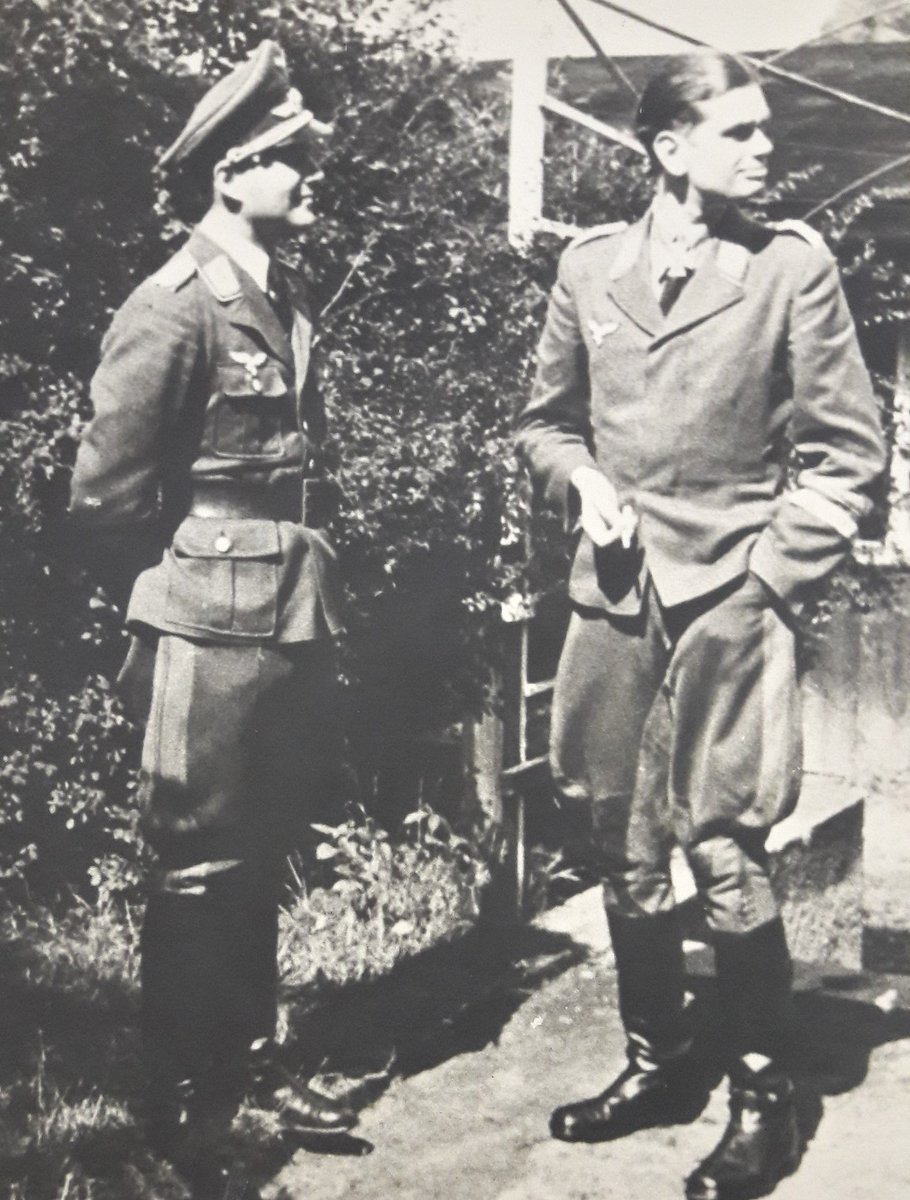
14/
Schacht arranged for a local eye specialist to operate on Hughes’ right eye, which resulted in the sight being saved.
Schacht was discharged from hospital in late February, & discovered that the Gestapo had set a date to remove Hughes from the hospital for execution.
Schacht arranged for a local eye specialist to operate on Hughes’ right eye, which resulted in the sight being saved.
Schacht was discharged from hospital in late February, & discovered that the Gestapo had set a date to remove Hughes from the hospital for execution.
15/
Schacht contacted Hans-Gunther Sontgerath, chief doctor in the hospital, and an anti-Nazi.
They formed a plan to save Hughes. First, at great personal risk, Schacht had Hughes’ status on his POW file officially changed from ‘Political Prisoner’ to ‘Prisoner of War’.
Schacht contacted Hans-Gunther Sontgerath, chief doctor in the hospital, and an anti-Nazi.
They formed a plan to save Hughes. First, at great personal risk, Schacht had Hughes’ status on his POW file officially changed from ‘Political Prisoner’ to ‘Prisoner of War’.
16/
Armed with this file, Dr Sontgerath hurriedly arranged that Hughes was sent by a hospital train via Padua to a Luftwaffe Camp in Germany to avoid the Prisoner of War collecting centre at Verona, where it was probable he would be subjected to further interrogation.
Armed with this file, Dr Sontgerath hurriedly arranged that Hughes was sent by a hospital train via Padua to a Luftwaffe Camp in Germany to avoid the Prisoner of War collecting centre at Verona, where it was probable he would be subjected to further interrogation.
17/
Dr Sontgerath advised Hughes to escape at the first opportunity, which he did, jumping from a train on March 11, along with 2 other POWs. For the next 3 weeks they trekked through the hills until partisans handed them to the British on March 30.
Hughes reached the UK in May
Dr Sontgerath advised Hughes to escape at the first opportunity, which he did, jumping from a train on March 11, along with 2 other POWs. For the next 3 weeks they trekked through the hills until partisans handed them to the British on March 30.
Hughes reached the UK in May
18/
Hughes furnished Major Eric Barkworth, the superb 2SAS Intel officer (pic), with news of Hitler’s Commando Order – the first the Allies had heard of it. Barkworth believed Hughes but 21 Army Group were sceptical & dismissed as ‘a mere German interrogation technique’.
Hughes furnished Major Eric Barkworth, the superb 2SAS Intel officer (pic), with news of Hitler’s Commando Order – the first the Allies had heard of it. Barkworth believed Hughes but 21 Army Group were sceptical & dismissed as ‘a mere German interrogation technique’.

19/
During SAS Operations in France in 1944, nearly 100 men from the SAS Brigade were executed in line with Hitler’s Commando Order.
Those responsible came not just from the SS and Gestapo, but also the Wehrmacht.
The graves of murdered 2SAS men (Moussey)
During SAS Operations in France in 1944, nearly 100 men from the SAS Brigade were executed in line with Hitler’s Commando Order.
Those responsible came not just from the SS and Gestapo, but also the Wehrmacht.
The graves of murdered 2SAS men (Moussey)

20/
Sontgerath died on April 29, 1945, executed by a Nazi firing squad for desertion.
Schacht survived the war. In 1966 Hughes tracked him down & Schacht replied to the letter, saying: “I was extremely pleased to learn that you, contrary to all expectations, survived the war.”
Sontgerath died on April 29, 1945, executed by a Nazi firing squad for desertion.
Schacht survived the war. In 1966 Hughes tracked him down & Schacht replied to the letter, saying: “I was extremely pleased to learn that you, contrary to all expectations, survived the war.”
21/21
The pair rekindled their friendship until Schacht’s death in 1975.
Hughes dedicated his memoir to him, and also Sontgerath, “without whose help neither I, nor my children later, would have lived.”
Jimmy Hughes, MC: 1920-2004
Tony Widdrington, MC: 1914-1944
The pair rekindled their friendship until Schacht’s death in 1975.
Hughes dedicated his memoir to him, and also Sontgerath, “without whose help neither I, nor my children later, would have lived.”
Jimmy Hughes, MC: 1920-2004
Tony Widdrington, MC: 1914-1944
@threadreaderapp unroll
• • •
Missing some Tweet in this thread? You can try to
force a refresh



